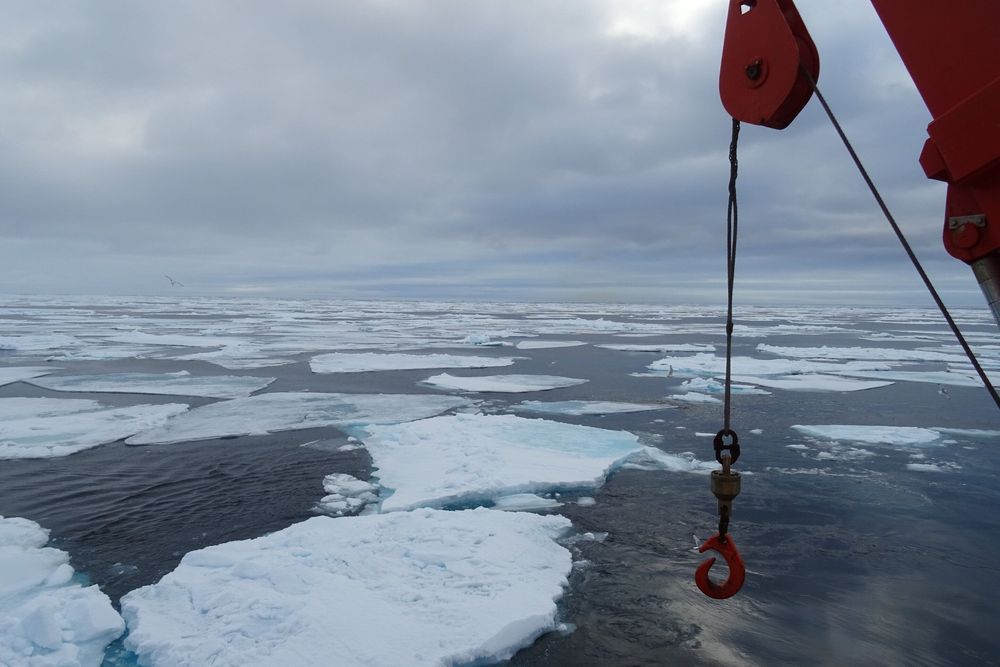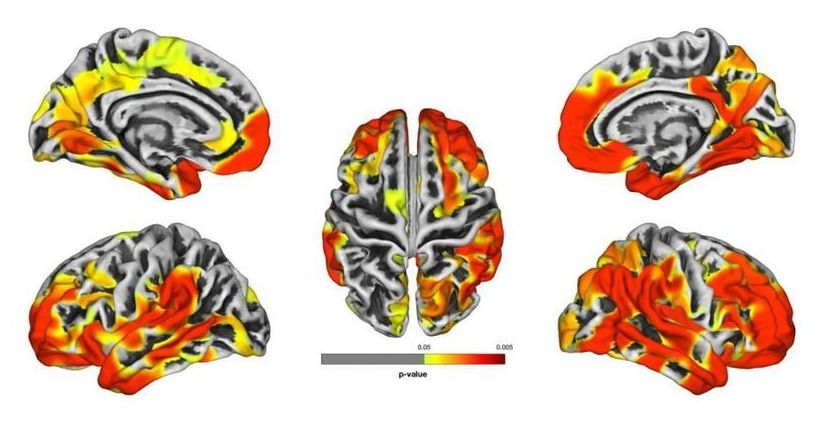Page 7262
Jul 29, 2020
Newer PFAS compound detected for first time in Arctic seawater
Posted by Josh Seeherman in categories: biotech/medical, food, health
This sucks.
Per- and polyfluoroalkyl substances (PFAS), found in many household products and food packages, have raised concerns because of their persistence and possible toxicity to people and wildlife. Because the compounds don’t break down naturally, they have become environmental contaminants. Now, researchers reporting in Environmental Science & Technology have studied the transport of 29 PFAS into and out of the Arctic Ocean, detecting a newer compound for the first time in Arctic seawater.
After studies indicated that two PFAS—PFOA and PFOS—can cause cancer, a compromised immune response and other health problems in lab animals, the two compounds were voluntarily phased out by industry. However, these legacy compounds are still widely detected in the environment. Intended as a safer replacement for PFOA, HFPO-DA (sold under the trade name GenX) is now thought to pose similar health and persistence concerns. Hanna Joerss and colleagues wanted to investigate the long-range, oceanic transport of legacy and replacement PFAS to the Arctic Ocean—a remote body of water connected to the Atlantic Ocean by the Fram Strait, which is located between Svalbard and Greenland.
Continue reading “Newer PFAS compound detected for first time in Arctic seawater” »
Jul 29, 2020
Tiger numbers ‘making a remarkable comeback’ in five countries, experts say
Posted by Fyodor Rouge in category: futurism
Such great news!!
Tiger numbers are making a “remarkable comeback” in five of the countries the species is found, scientists say.
The big cat populations in Bhutan, China, India, Nepal and Russia are all said to be increasing following the launch of the TX2 initiative a decade ago.
Continue reading “Tiger numbers ‘making a remarkable comeback’ in five countries, experts say” »
Jul 29, 2020
Turkey passes controversial law regulating social media
Posted by Saúl Morales Rodriguéz in category: law
Turkey’s parliament passed a law regulating social media on Wednesday, that critics said will increase censorship and help authorities silence dissent.
Jul 29, 2020
Say “Bon Voyage” to our Mars Perseverance Rover!
Posted by Alberto Lao in category: space

We’re going back to Mars! NASA’s Perseverance Mars Rover will be launching soon for its seven-month journey to the Red Planet to search for signs of ancient life. And it’s bringing along a friend: a little helicopter named Ingenuity! Ingenuity will test the first powered flight on Mars.
Join us in wishing Perseverance and Ingenuity “bon voyage” on their #CountdownToMars! https://go.nasa.gov/2CJHidq
Jul 29, 2020
Mission Overview: NASA’s Perseverance Mars Rover
Posted by Alberto Lao in categories: futurism, space

An ambitious mission to a very special landing site: our Perseverance rover is heading to the Red Planet to search for signs of ancient life, collect samples for future return to Earth, and help pave the way for human exploration. http://go.nasa.gov/3f6Pd1o
#CountdownToMars
Jul 29, 2020
Using Artificial Intelligence to Smell the Roses
Posted by Genevieve Klien in categories: chemistry, food, robotics/AI
Summary: New artificial intelligence technology can accurately predict how any chemical is going to smell to humans.
Source: UCR
A pair of researchers at the University of California, Riverside, has used machine learning to understand what a chemical smells like — a research breakthrough with potential applications in the food flavor and fragrance industries.
Jul 29, 2020
A Crazier Crazy Straw for Science
Posted by Genevieve Klien in categories: science, transportation
What do the loopy straws that children like to sip drinks through have in common with cutting-edge science? Ask Ryan Murphy and his colleagues at the National Institute of Standards and Technology (NIST), where the team has thought up a creative way to explore the properties of fluids under extreme conditions.
The team invented a device that can push fluids through a narrow tube at the velocity of a car hurtling down a rural interstate — about 110 km per hour. This might not sound overly fast to a road tripper, but the tube’s inner diameter is typically 100 micrometers — about the thickness of a human hair. Scaled up, that would be like a train hurtling through a subway tunnel about 100 times faster than a rocket blasting its way into orbit.
To add to the fun, the meter-long tube is coiled up like a spring, so the fluid careens around loop after three-centimeter-wide loop, as though that rocketing subway were a blindingly fast roller coaster that turns somersaults from start to finish.
Jul 29, 2020
Further Evidence World Trade Center Responders Are at Risk for Dementia
Posted by Genevieve Klien in categories: biotech/medical, neuroscience
Summary: First responders at the World Trade Center have reduced cortical gray matter thickness, which was consistent with neurodegenerative conditions and evidence their brain age is, on average, ten years older than those of similar ages in the general population.
Source: Stony Brook University
Two studies led by Stony Brook University researchers to be presented virtually at the Alzheimer’s Association International Conference on July 28, 2020, indicate that World Trade Center (WTC) first responders are at risk for developing dementia. The studies included individuals with signs of cognitive impairment (CI) who show neuroradiological abnormalities and changes in their blood similar to that seen in Alzheimer’s disease patients and those with related dementias.
Jul 29, 2020
How to hide from a drone – the subtle art of ‘ghosting’ in the age of surveillance
Posted by Genevieve Klien in categories: drones, security, surveillance
Drones of all sizes are being used by environmental advocates to monitor deforestation, by conservationists to track poachers, and by journalists and activists to document large protests. As a political sociologist who studies social movements and drones, I document a wide range of nonviolent and pro-social drone uses in my new book, “The Good Drone.” I show that these efforts have the potential to democratize surveillance.
But when the Department of Homeland Security redirects large, fixed-wing drones from the U.S.-Mexico border to monitor protests, and when towns experiment with using drones to test people for fevers, it’s time to think about how many eyes are in the sky and how to avoid unwanted aerial surveillance. One way that’s within reach of nearly everyone is learning how to simply disappear from view.
















